In AP United States History, Postwar Diplomacy examines the strategies and agreements that shaped the global order after World War II, focusing on the efforts to rebuild war-torn nations, manage rising tensions between the United States and the Soviet Union, and establish new international institutions like the United Nations. This era set the foundation for the Cold War, influencing U.S. foreign policy and its role as a global leader, with significant impacts on international relations and domestic policies.
Learning Objectives
In AP United States History, you will be expected to understand the key aspects of Postwar Diplomacy, including the decisions made at conferences like Yalta and Potsdam, the implementation of the Truman Doctrine and Marshall Plan, and the formation of NATO. The impact of these policies on the emerging Cold War and the role of the United States in shaping the postwar world order will be analyzed. Additionally, you will examine the division of Europe and the creation of the United Nations.
Key Elements of Postwar Diplomacy
The Yalta Conference (February 1945)
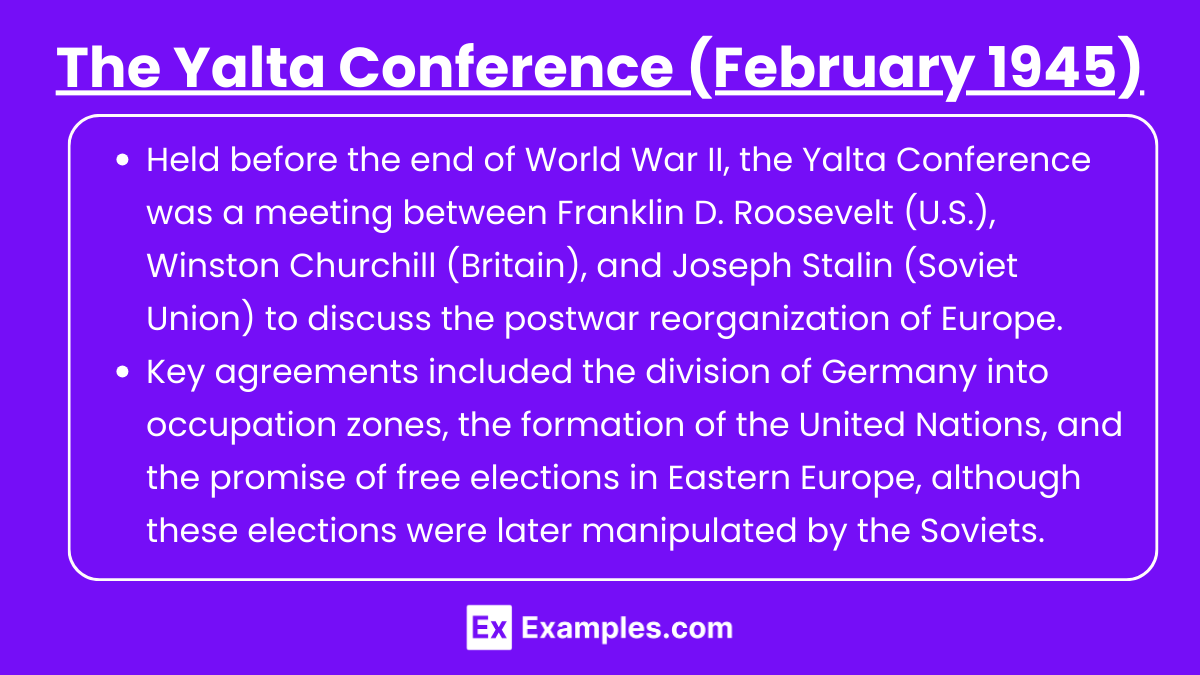
- Held before the end of World War II, the Yalta Conference was a meeting between Franklin D. Roosevelt (U.S.), Winston Churchill (Britain), and Joseph Stalin (Soviet Union) to discuss the postwar reorganization of Europe.
- Key agreements included the division of Germany into occupation zones, the formation of the United Nations, and the promise of free elections in Eastern Europe, although these elections were later manipulated by the Soviets.
The Potsdam Conference (July-August 1945):
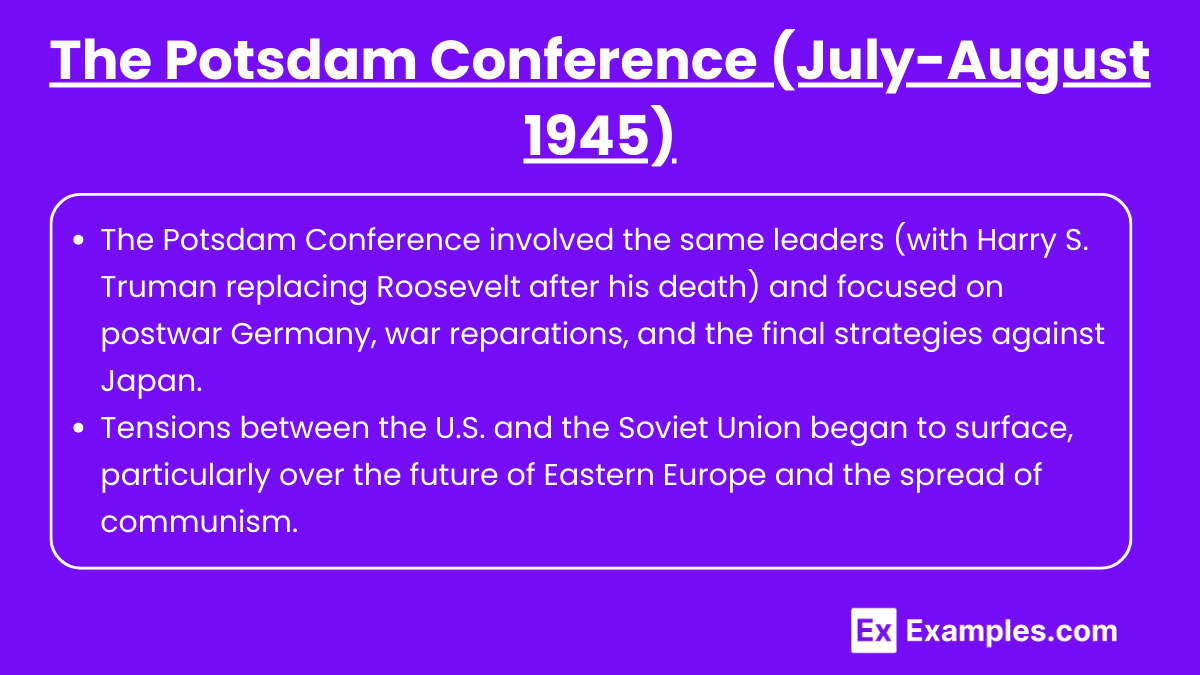
- The Potsdam Conference involved the same leaders (with Harry S. Truman replacing Roosevelt after his death) and focused on postwar Germany, war reparations, and the final strategies against Japan.
- Tensions between the U.S. and the Soviet Union began to surface, particularly over the future of Eastern Europe and the spread of communism.
The Truman Doctrine (1947):
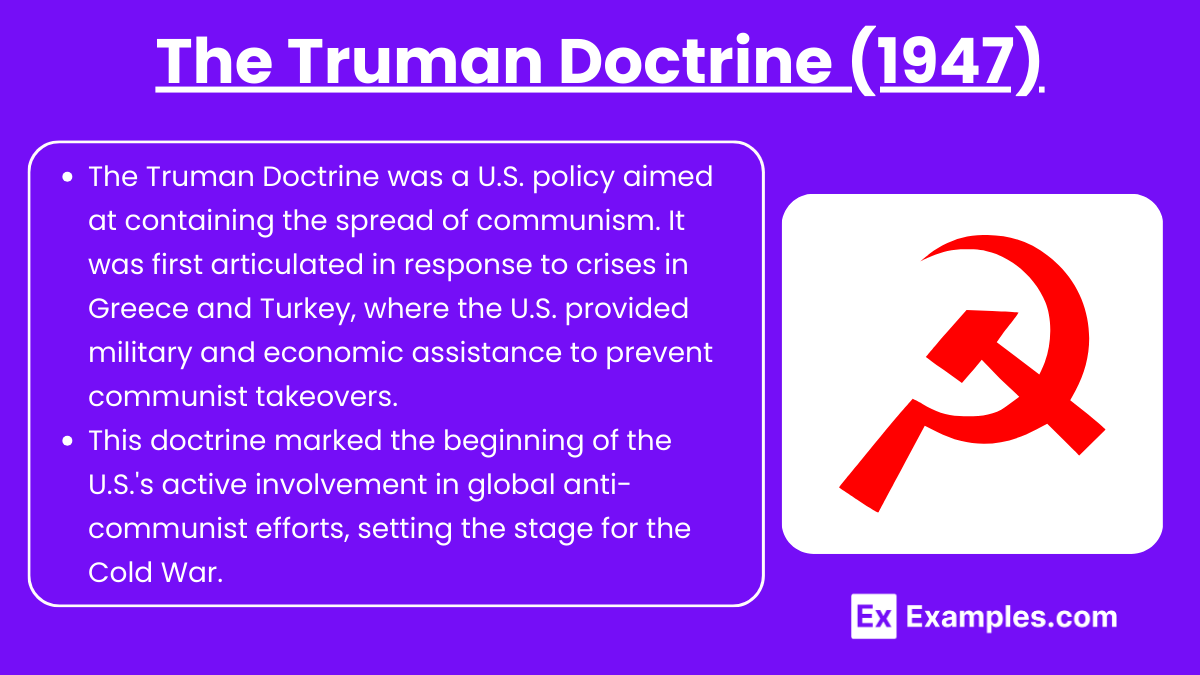
- The Truman Doctrine was a U.S. policy aimed at containing the spread of communism. It was first articulated in response to crises in Greece and Turkey, where the U.S. provided military and economic assistance to prevent communist takeovers.
- This doctrine marked the beginning of the U.S.’s active involvement in global anti-communist efforts, setting the stage for the Cold War.
The Marshall Plan (1948):
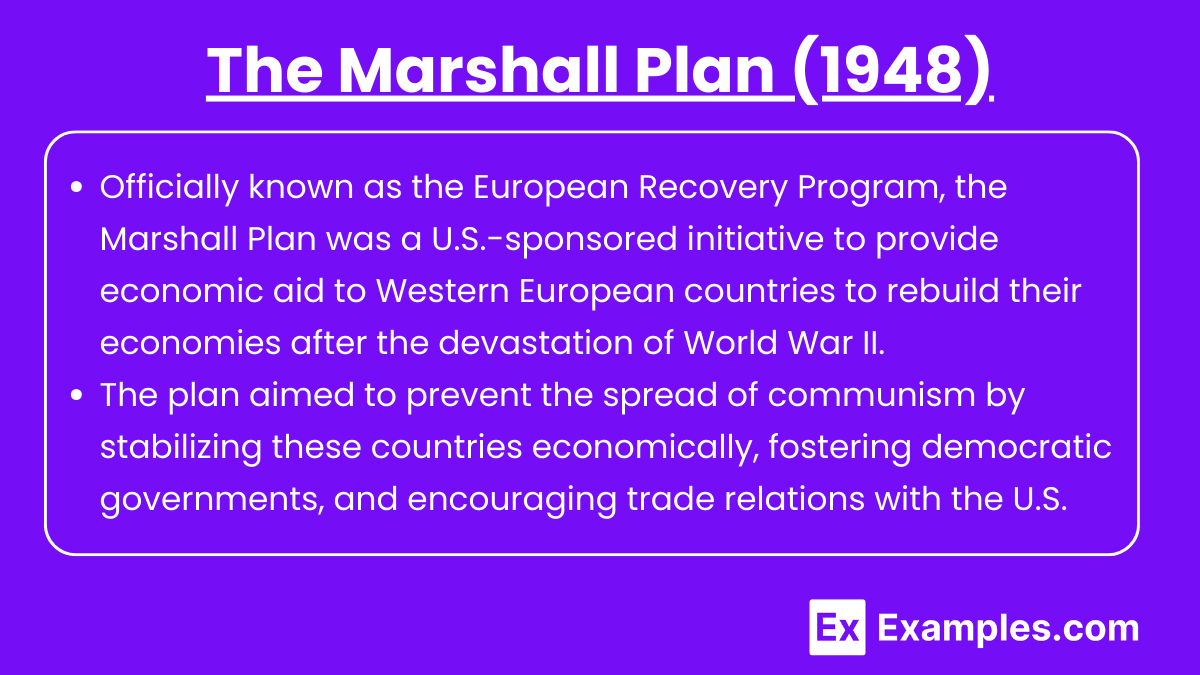
- Officially known as the European Recovery Program, the Marshall Plan was a U.S.-sponsored initiative to provide economic aid to Western European countries to rebuild their economies after the devastation of World War II.
- The plan aimed to prevent the spread of communism by stabilizing these countries economically, fostering democratic governments, and encouraging trade relations with the U.S.
Formation of NATO (1949)

- The North Atlantic Treaty Organization (NATO) was established as a military alliance between the U.S., Canada, and several Western European nations. The primary purpose was to provide collective security against the Soviet Union and its allies.
- NATO represented a significant shift in U.S. foreign policy, from isolationism to a leadership role in a permanent military alliance during peacetime.
The United Nations (1945)
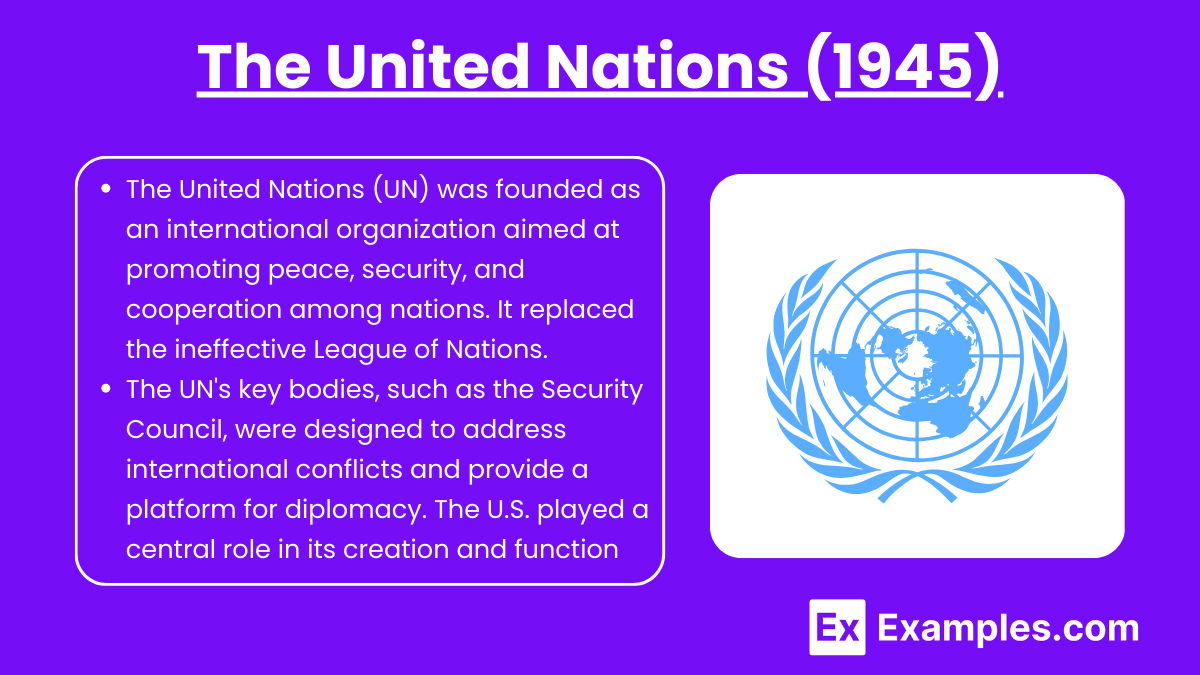
- The United Nations (UN) was founded as an international organization aimed at promoting peace, security, and cooperation among nations. It replaced the ineffective League of Nations.
- The UN’s key bodies, such as the Security Council, were designed to address international conflicts and provide a platform for diplomacy. The U.S. played a central role in its creation and function.
The Berlin Airlift (1948-1949)
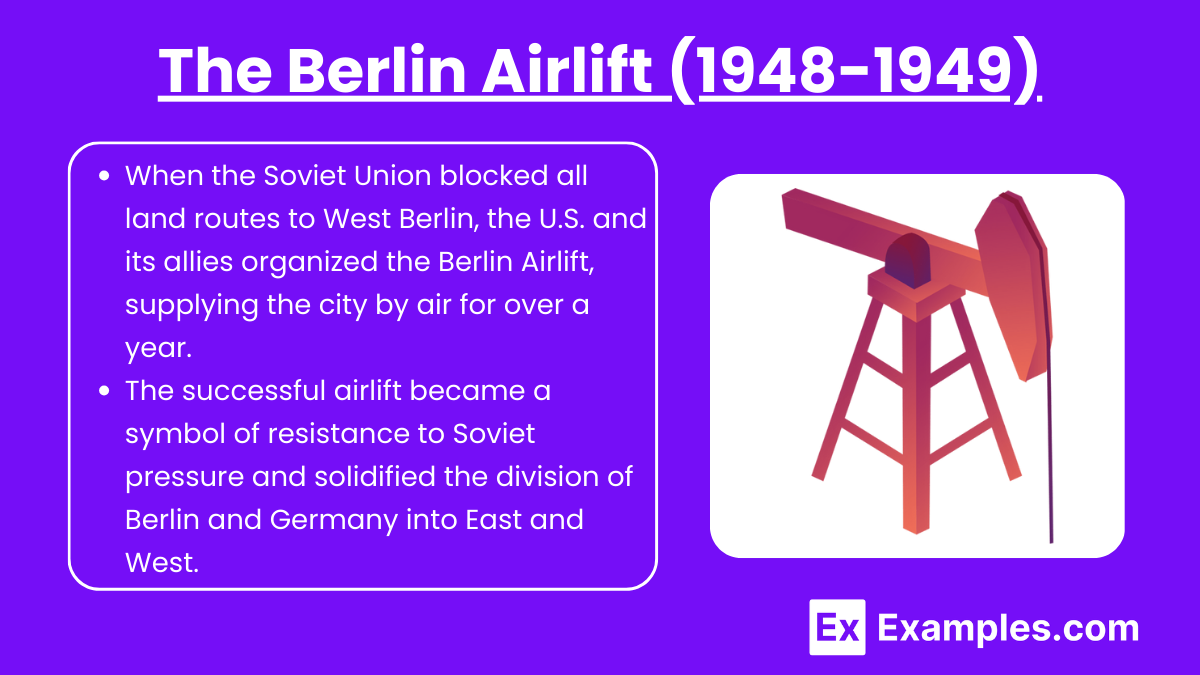
- When the Soviet Union blocked all land routes to West Berlin, the U.S. and its allies organized the Berlin Airlift, supplying the city by air for over a year.
- The successful airlift became a symbol of resistance to Soviet pressure and solidified the division of Berlin and Germany into East and West.
The Iron Curtain and Division of Europe
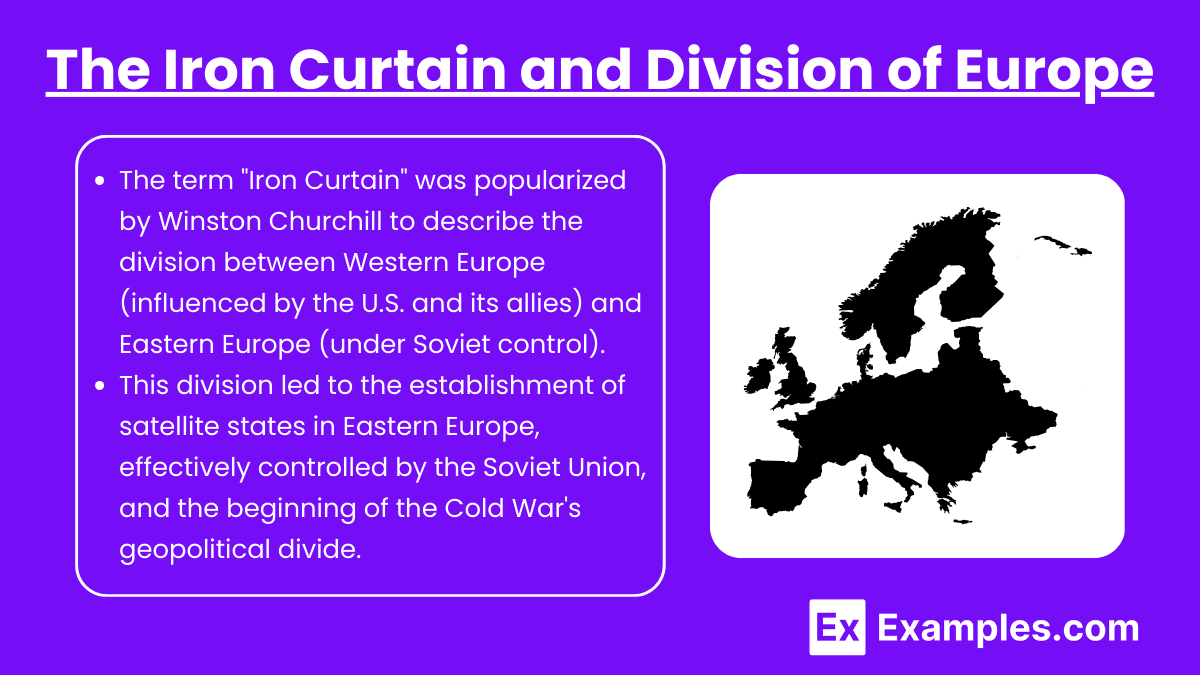
- The term “Iron Curtain” was popularized by Winston Churchill to describe the division between Western Europe (influenced by the U.S. and its allies) and Eastern Europe (under Soviet control).
- This division led to the establishment of satellite states in Eastern Europe, effectively controlled by the Soviet Union, and the beginning of the Cold War’s geopolitical divide.
Examples
Example 1: Yalta Conference Agreements
The Yalta Conference’s decision to divide Germany into occupation zones shaped the postwar European landscape and laid the groundwork for Cold War tensions.
Example 2: Truman Doctrine in Greece and Turkey
The U.S. provided military and economic support to Greece and Turkey under the Truman Doctrine, effectively preventing communist takeovers and signaling a shift in U.S. foreign policy.
Example 3: Marshall Plan Aid to Western Europe
The Marshall Plan revitalized Western European economies, preventing the spread of communism and fostering strong economic ties between the U.S. and Europe.
Example 4: NATO Formation
The creation of NATO marked a new era of military alliances, with the U.S. committing to the defense of Western Europe against potential Soviet aggression.
Example 5: Berlin Airlift
The Berlin Airlift demonstrated the U.S.’s resolve to oppose Soviet pressure and maintain the independence of West Berlin, becoming a symbol of Cold War resistance.
MCQs:
What was the primary purpose of the Marshall Plan?
- A) To rebuild Japan after World War II
- B) To prevent the spread of communism in Western Europe
- C) To establish the United Nations
- D) To divide Germany into occupation zones
Explanation: The Marshall Plan was designed to provide economic aid to Western European countries to rebuild their economies and prevent the spread of communism.
Which event marked the beginning of U.S. active involvement in global anti-communist efforts?
- A) The signing of the NATO treaty
- B) The Yalta Conference
- C) The Truman Doctrine
- D) The Berlin Airlift
Explanation: The Truman Doctrine, announced in 1947, marked the beginning of the U.S.’s commitment to containing communism globally, starting with aid to Greece and Turkey.
What was the significance of the Berlin Airlift?
- A) It marked the first use of atomic bombs in warfareB) It prevented the Soviet takeover of BerlinC) It led to the formation of the United NationsD) It was the first instance of NATO military action
Explanation: The Berlin Airlift was a successful operation by the U.S. and its allies to supply West Berlin, preventing the Soviet Union from gaining control of the city through a blockade.


